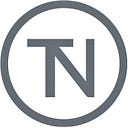Knowing Me, Knowing You
With the limitations of video conferencing becoming all too clear these days, the art of face-to-face networking has become highly prized. But what about those of us who find networking difficult? While there’s an enduring perception that some are just instinctively better at relationship-building than others, it doesn’t mean to say that these apparently innate behaviours can’t be learnt.
Even those less adept at social relationships might find they sometimes ‘click’ with certain people more than others. It’s natural to build relationships with people who are more like us — the reason so many of us (around 15%) meet our loved ones in the workplace.
And there are two elements that can really help build chemistry. Firstly, empathy — the social ‘glue’ that engages people and makes us trustworthy. At the most basic level, relating to, or understanding others’ challenges and motivations is bound to make us more relevant in another’s eyes. But it also shows we care: it allows us to connect on a human level.
In evolutionary terms, collaboration and understanding have been far more integral to our survival than competition. The hormone oxytocin increases trust and empathy and due its powers, we’ve been neurologically rewarded for collaborating for at least 70,000 years. Collaborate well and — pow! — here’s a hit of oxytocin. Feel like someone understands you? Pow! — another hit!
And in all human interactions, we’re subconsciously really only asking two questions: can I trust this person? And do they understand my needs?
And yet the fundamental mistake business people make is trying to connect on the purely professional level. We try to understand the other person’s industry, their competitors, their objectives — but we don’t see them as individuals. Yet who they are as a person has a far bigger bearing on a business outcome. Are they risk averse or a show-off? Are they competitive? Is there something in the overall context of their lives that might mean they’re more pressed for time, or feeling insecure about their position?
At True & North, we teach clients to be empathetic; the kind of soft skill or ‘intangible asset’ that doesn’t appear on the balance sheet but can truly help make or break a business transaction. Imagine how many campaigns would fail without empathy? Through a tool we borrowed from Ethnography called ‘Empathy Mapping’, we are able to gain deep insight into others’ lives on a deeper level. It forces us to see our client holistically, to step back and really widen our view, before we consider our role in their world.
The other key way to build relationships is by ‘anchoring’ your role in another person’s world. Sometimes our clients will have a certain perception of who we are and where we fit into their world, which is disconnected to how we see ourselves and what we have to offer. This is driven by Anchoring Bias. Just as our initial impressions of people are formed very quickly, there’s a disproportionate reliance on an initial piece of information — which, rightly or wrongly, all future information will be seen in the context of.
Here’s an example: if you worked in media sales circa 2005–2010, selling classified or display ads to national newspapers was most likely a breeze. You didn’t need to explain to anyone the value of buying an ad, so it was traded like a commodity. Then the world shifted. The calls for straightforward press ads became less and less frequent. However if you didn’t diversify, to clients you were still the ‘classified ads guy’ or the ‘DPS print woman’: you never established yourself as anything other. A whole generation of media sales team had to get out of their offices and perhaps for the first time have a conversation with their clients about how to create great content — the ones that didn’t do that have moved out of Media Land.
Instead, a useful and relevant point of view that demonstrates a real understanding of the client’s world will make what you have to say more valuable. In other words, you’ve ‘anchored’ your role in a prospective client’s world, now and for the future. It’s one of the most effective approaches that we teach: it shows upfront empathy and authenticity — and underpins real trust. And right now, that can be just as valuable as financial results on the balance sheet.
